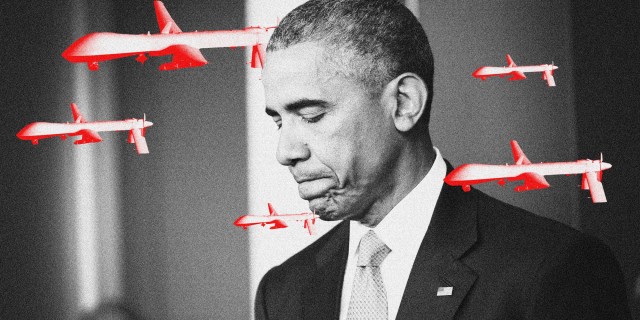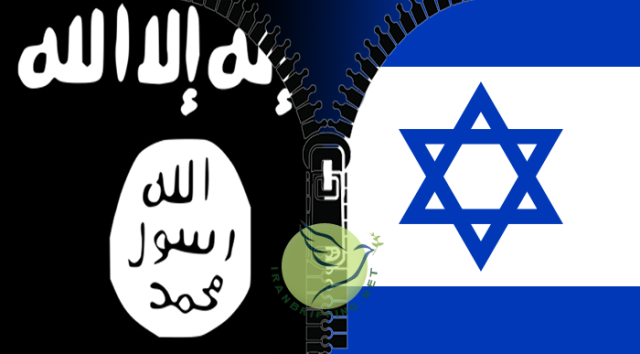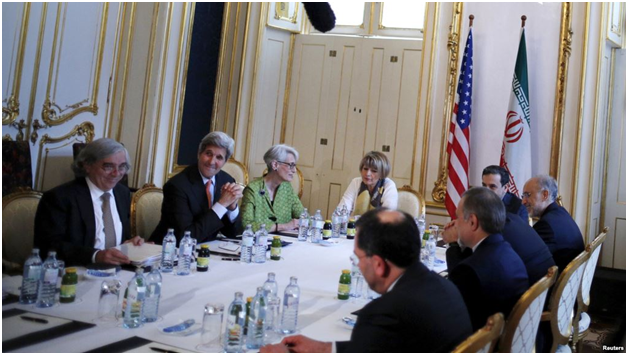U.S Spying on the Whole World, including their ‘Friends’
Spy craft, especially Electronic Intelligence or ELINT, is one of the tools of the trade used to collect information on enemy activities. It is also used to monitor allies’ activities. Nothing new there. Thus the latest release by Snowden from his base of operations in exile in Moscow lit up the left media. They spotlighted the latest episode of both Britain’s GCHQ and the NSA. GCHQ and NSA were partners in a nearly two decade operations endeavoring to obtain real time video feed from Israel drones and aircraft in operations over Gaza, Lebanon, Syria and possibly Iran.
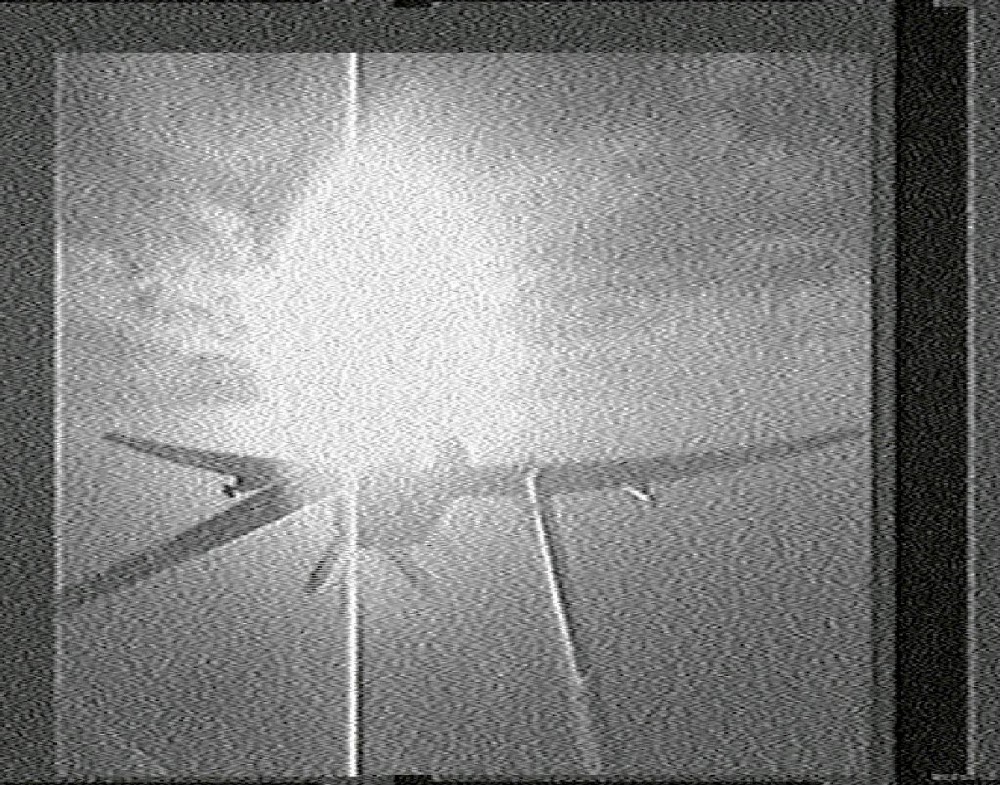
January 28, 2010 GCHQ hacked picture of Israeli Heron TP (Eitan) UAV with Missile.
If you read the underlying story in The Intercept about hacking video feed from Israeli drones with alleged off the shelf software. See: “Anarchist Snapshots: Hacked Images from Israel’s Drone Fleet”. It is more than apparent that the left media used the Snowden revelations about the “Anarchist” operation of GCHQ and NSA to show how vulnerable the Israeli drone capabilities may be to intercept of real time imagery uplinked from drones and fighter aircraft to satellites. Israel is the world’s leading developer and exporter of drones. The Israelis are not the only ones vulnerable. US drone activity in Iraq was intercepted by Saddam Hussein’s ELINT group during the Second Gulf War. Moreover, Iran as we saw in news reports and photos flying over the USS Harry Truman has its own drone capabilities and ELINT capabilities as does its proxies Hezbollah and Hamas.
“Anarchist” operations were based in a long term NSA complex at a former Royal Air Force base in the Trodoos Mountains of Cyprus. The Intercept article reported that the GCHQ has been monitoring Israeli drone video feed since 1998. The atmospheric conditions from that ELINT base are such that it covers virtually most of North Africa and the Middle East. The NSA listening post may have been involved during the USS Liberty incident in the June Six Days of War of 1967 coupled with airborne ELINT aircraft. The Intercept article describes instances of real time video feed in drone strikes by Israel in Gaza operations against Hamas beginning in 2009. In one instance, the pictures are from a helmet heads-up display of an Israeli piloted F-16. One of the images captured by “Anarchist” purports to show an Israeli Heron TP drone armed with missiles under its long wings conflated to be on a possible mission to Iran.
Israel official complaints about Snowden’s revelations from former Israeli Intelligence Minister Yuval Steinitz have focused on the long history of the Anarchist UK-US ELINT ops and recent revelations about U.S. spying on Israeli PM Netanyahu. The Jerusalem Post reported Steinitz saying:
We are not surprised; we know that the. That is disappointing, because for decades we have not spied, collected intelligence or attempted to crack the encryption of the United States.
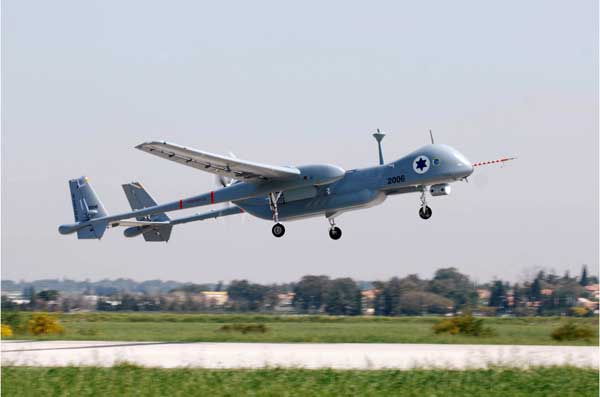
Israeli Air Force Heron TP (Eitan) UAV.
Israel was alleged to have monitored U.S. negotiations of the nuclear pact with Iran. It has been common knowledge that Israeli development and tactical use of drones may be the 21st Century offensive weapon of choice. In Israel’s case that is coupled with deep submergence air breathing attack submarines like the five Israeli Navy Dolphin submarines prowling the Arabian Sea and Eastern Mediterranean. They are equipped with both conventional and nuclear warheads, as well as covert intelligence ops capabilities for a second strike in the case of a nuclear attack. Moreover, there is the draconian capability of the Israeli Jericho III ICBM to launch a low yield nuclear warhead capable of creating an Electronic Magnetic Pulse against existential threats. That is Israel’s version of a MAD deterrent capability under the triple anti-rocket and missile shield composed of Iron Dome, David’s Sling and the jointly developed Arrow III, ABM system.
We have written about the Israeli drone prowess in NER articles and Iconoclast blogs over the past seven years. In a 2009 Israeli strike against a convoy of Iranian weapons in the Sudan we noted in an NER article:
The London Times revealed in a later report that Israel may have used armed UAVs, the Hermes 450 manufactured by Elbit that is equipped with two Hellfire missiles. A Hermes UAV squadron is based at Pachamim air base south of Tel Aviv. Mossad may have developed the target intelligence. Further, the Israel Air Force may have used the larger Heron TP Eitan UAV with a wingspan of 110 feet to possibly refuel the Hermes UAVs. The Hermes 450 UAV can remain aloft for 24 hours, while the Eitan can stay up for 36 hours.
[…]
What should not be lost on Iran and the Sudan is that the alleged IAF raid on the convoy in January was within the same operational radius of approximately 700 nautical miles-equidistant from Jerusalem to both Port Sudan and Tehran.
When there was speculation in early 2012 about a possible strike by Israel against Iran’s nuclear facilities we interviewed Yediot Ahronoth intelligence columnist Dr. Ronen Bergman and had this exchange:
Gordon: The recent crash of a heavy lift Hermes Drone, disclosed that Israel has the capability of reaching Tehran with UAV’s. Could Israel launch waves of drone attacks on Iranian Nuclear projects and missile sites with any degree of success?
Bergman: The question refers to my remarks on using drones. I did not say and I didn’t mean that Israel is capable of launching a strategic strike using drones alone. Far from it; however, Israel is using drones for various surveillance and operational activities. These can be very useful in a possible strike. Deploying drones, especially drones that can stay in the air for 48 hours and carry a payload of up to one ton, would be a powerful weapon when you have many of these involved in a massive, coordinated strike over Iran.
Then there was the Israeli attack in 2012 on the Sudan Yarmouk weapons factory that prompted this comment about the use of Israeli drones equipped with the equivalent of the Boeing CHAMP missile capable of producing non-nuclear EMP effects in an Iconoclast blog post:
An AP story in a 2012 Washington Times report successful bomb damage assessment by a disputed IAF raid on the Yarmouk munitions factory near Khartoum in the Sudan drawn from satellite imagery studies. As noted in the AP/Israel Hayom news story, “Satellite Images Shed Light on Sudan Weapons attack”, Israeli commentators confirmed our NER/Iconoclast assessment that Israel has the conventional capability to attack Iranian nuclear and missile development facilities. As we commented in that post, Israel may also have unconventional means equal to recent US tests of new high energy electronics killer cruise missiles, as well.
Some Israeli commentators suggested that if Israel did indeed carry out an airstrike that caused the Sudan blast, it might have been a trial run of sorts for an operation in Iran. Both countries are roughly 1,000 miles (1,600 kilometers) away from Israel, and an air operation would require careful planning and in-flight refueling.
Israel could have a new unconventional capability given Boeing’s development of the CHAMP cruise missile that could produce high energy non-nuclear EMP effects to take out electronics. Note this recent Digital Journal report, “New cruise missile will fry electronic targets, change warfare”.
The three IDF operations against Hamas in 2009, 2012 and the 2014 fifty day summer war clearly demonstrated the prowess and accuracy of Israeli drones and aircraft Israeli military maintain disciplined silence about attack victories. For example Operation Orchard in 2007 that took out the Syrian plutonium reactor built with North Korean assistance and some believe paid for by Iran. Launching ground hugging cruise missiles with CHAMP capabilities from Hermes heavy lift drones in a swarming attack against Iranian nuclear facilities just could be Israel’s future prowess. It beats sending in young men and women in aging F-15s and F-16s in what could be suicidal missions.

